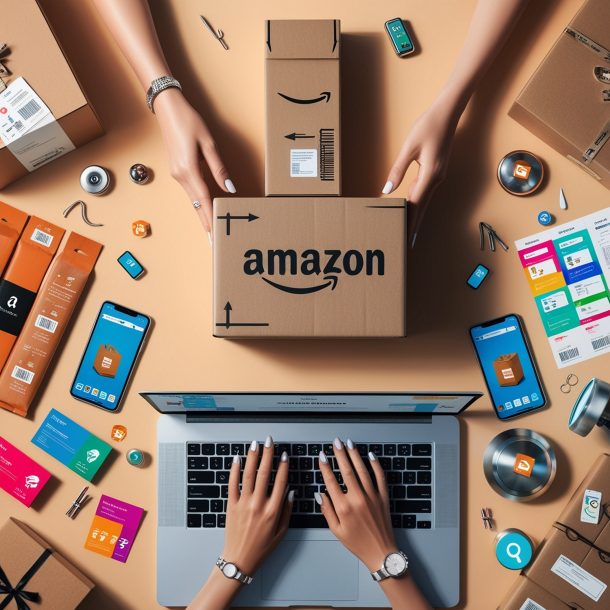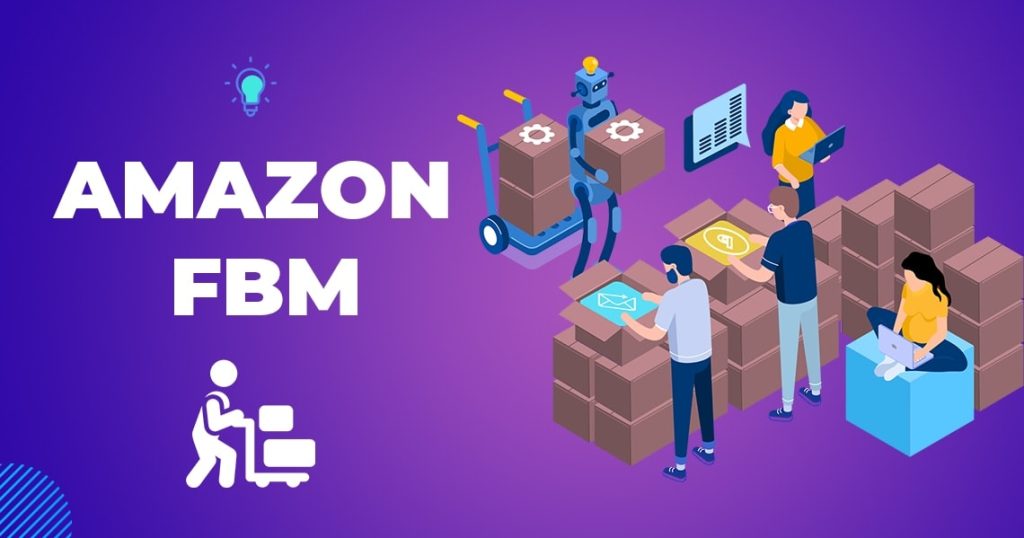
Selling on Amazon is an exciting opportunity for businesses, but choosing the right fulfillment method is key to success. Amazon offers two main fulfillment options: Fulfillment by Amazon (FBA) and Fulfillment by Merchant (FBM). Understanding the differences, benefits, and challenges of both can help sellers make informed decisions that align with their business goals.

Fulfillment by Amazon (FBA)
FBA is a popular option for sellers who want Amazon to handle the entire fulfillment process. When using FBA, you ship your inventory to Amazon’s fulfillment centers, and they take care of storage, picking, packing, shipping, customer service, and even returns.
Benefits of FBA:
1.Prime Eligibility: With FBA, your products automatically qualify for Amazon Prime, giving you access to millions of Prime members who prioritize fast, free shipping. This can significantly increase your sales potential.
2. Hands-Off Fulfillment: You don’t have to worry about shipping logistics or customer service. Amazon handles these tasks, giving you more time to focus on scaling your business, managing inventory, and optimizing product listings.
3.Better Buy Box Advantage: FBA often gives sellers an edge in winning the Buy Box, which is crucial for driving conversions. This feature can be especially beneficial in competitive niches.
However, there are some potential challenges with FBA:
- Fees and Costs: FBA comes with storage fees and fulfillment costs, which can add up quickly, especially if you have slow-moving inventory. Sellers need to monitor their margins to ensure profitability.
- Inventory Management: Once your products are in Amazon’s warehouse, you lose direct control over your stock, making it harder to manage inventory and avoid stockouts or overstock situations.

Fulfillment by Merchant (FBM)
FBM allows sellers to handle their own storage, packing, and shipping. While this gives you more control over the fulfillment process, it also requires you to manage customer service and returns on your own.
Benefits of FBM:
- Lower Fees: FBM eliminates many of the fees associated with FBA, such as storage and fulfillment costs, which can make it a more cost-effective option, especially for large or bulky items.
- Direct Control: With FBM, you have full control over your inventory and shipping processes. This flexibility can be advantageous for businesses with specialized fulfillment needs or for those who sell on multiple platforms.
- Better for Certain Product Categories: If your products have lower sales volume or are expensive to store in Amazon’s fulfillment centers, FBM may be the smarter choice. It also allows you to maintain tighter control over the quality of your shipments.
Despite its benefits, FBM has some drawbacks:
- Limited Prime Access: FBM sellers are not automatically eligible for Amazon Prime, unless they are enrolled in the Seller Fulfilled Prime program, which has its own set of requirements.
- Higher Time Commitment: FBM requires more hands-on effort, from shipping and tracking orders to handling customer inquiries and returns. This can be challenging, especially for small businesses or individual sellers.
Choosing the Right Fulfillment Method for Your Business
Deciding between FBA and FBM depends on several factors, including the type of products you sell, your profit margins, and your business model. Many successful Amazon sellers diversify their fulfillment strategies, using a mix of both FBA and FBM to optimize their operations. For instance, high-demand products can be managed through FBA to leverage Prime benefits, while slower-moving or specialized items may be fulfilled through FBM to reduce storage costs.

Key Considerations:
- Product Size and Weight: Large or heavy products often incur high storage and fulfillment fees with FBA, making FBM a more cost-effective option.
- Sales Volume: If you sell high-volume products, FBA’s streamlined process and access to Prime members may boost your sales significantly. However, for low-volume or seasonal products, FBM can offer more flexibility and lower costs.
- Fulfillment Control: If you prefer to maintain control over packaging, shipping, and customer service, FBM might be the better option. On the other hand, if you want a hands-off approach, FBA allows you to delegate fulfillment tasks to Amazon.
Conclusion
When selling on Amazon, understanding and diversifying your fulfillment strategy can directly impact your success. FBA offers a hands-off approach with benefits like Prime access and higher Buy Box potential, while FBM gives you more control over the fulfillment process and can be more cost-effective for certain products. Many sellers find success using a hybrid approach, capitalizing on the strengths of both FBA and FBM to meet different business needs.
Whether you’re just starting out or looking to optimize your current Amazon operations, carefully weighing the pros and cons of FBA vs. FBM will help you maximize your profits and streamline your business on the platform.














